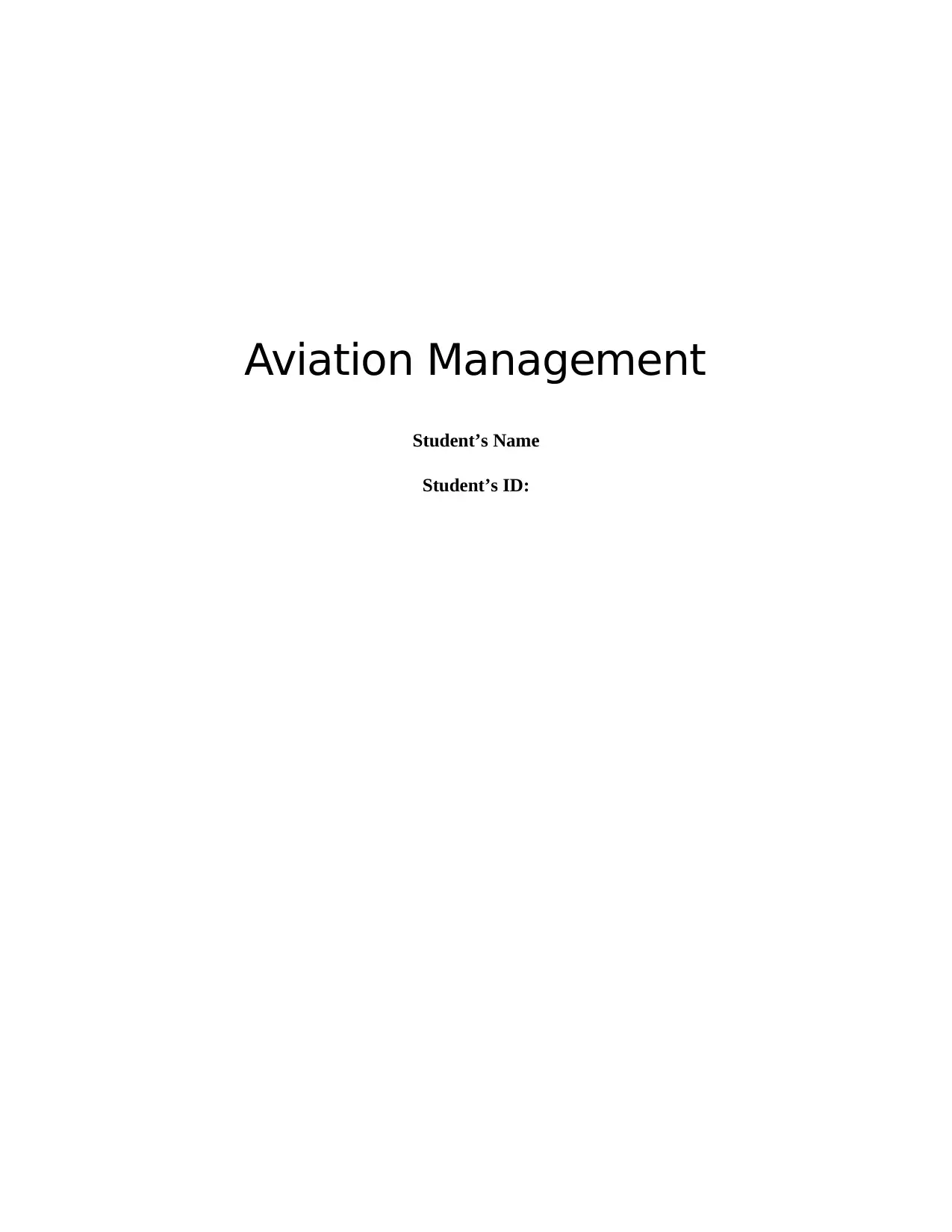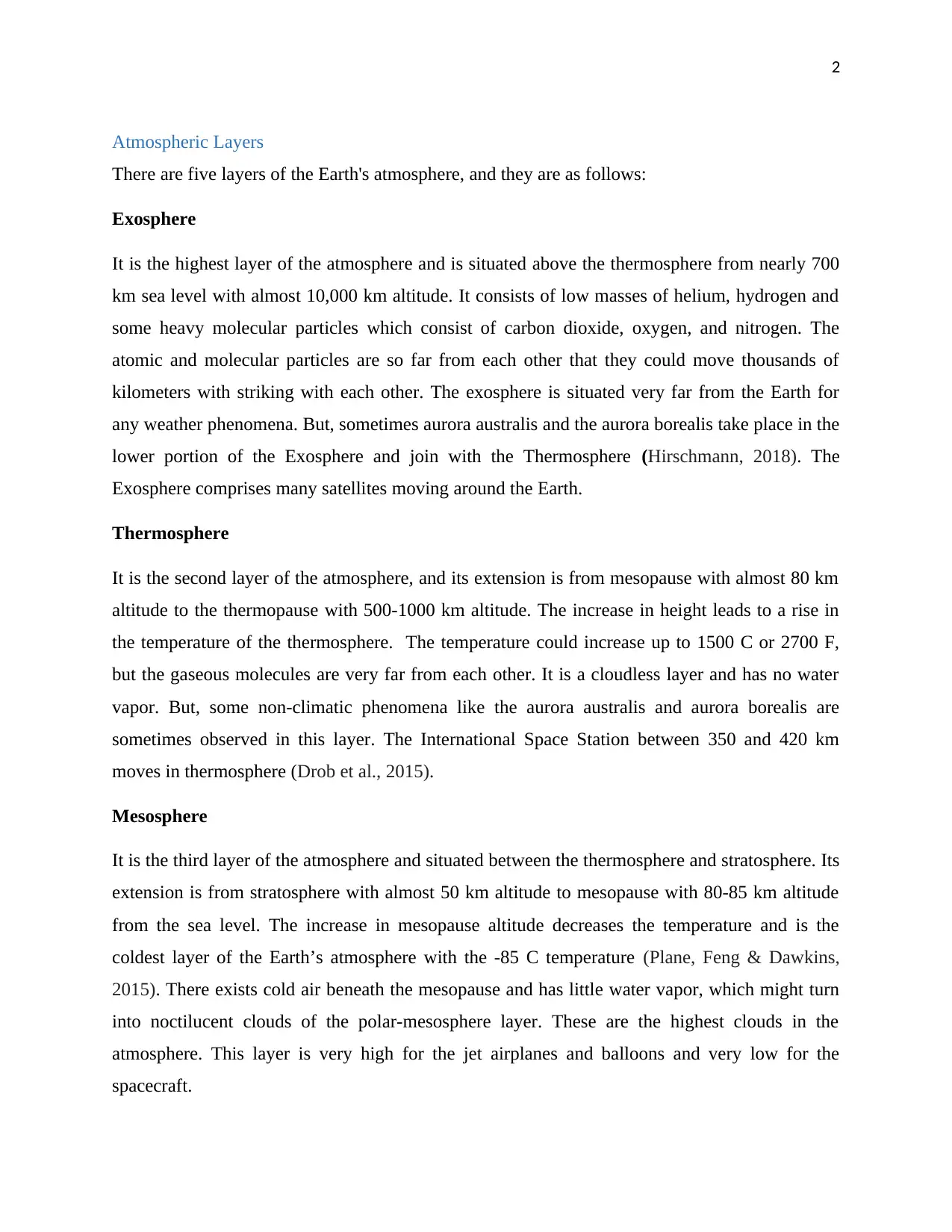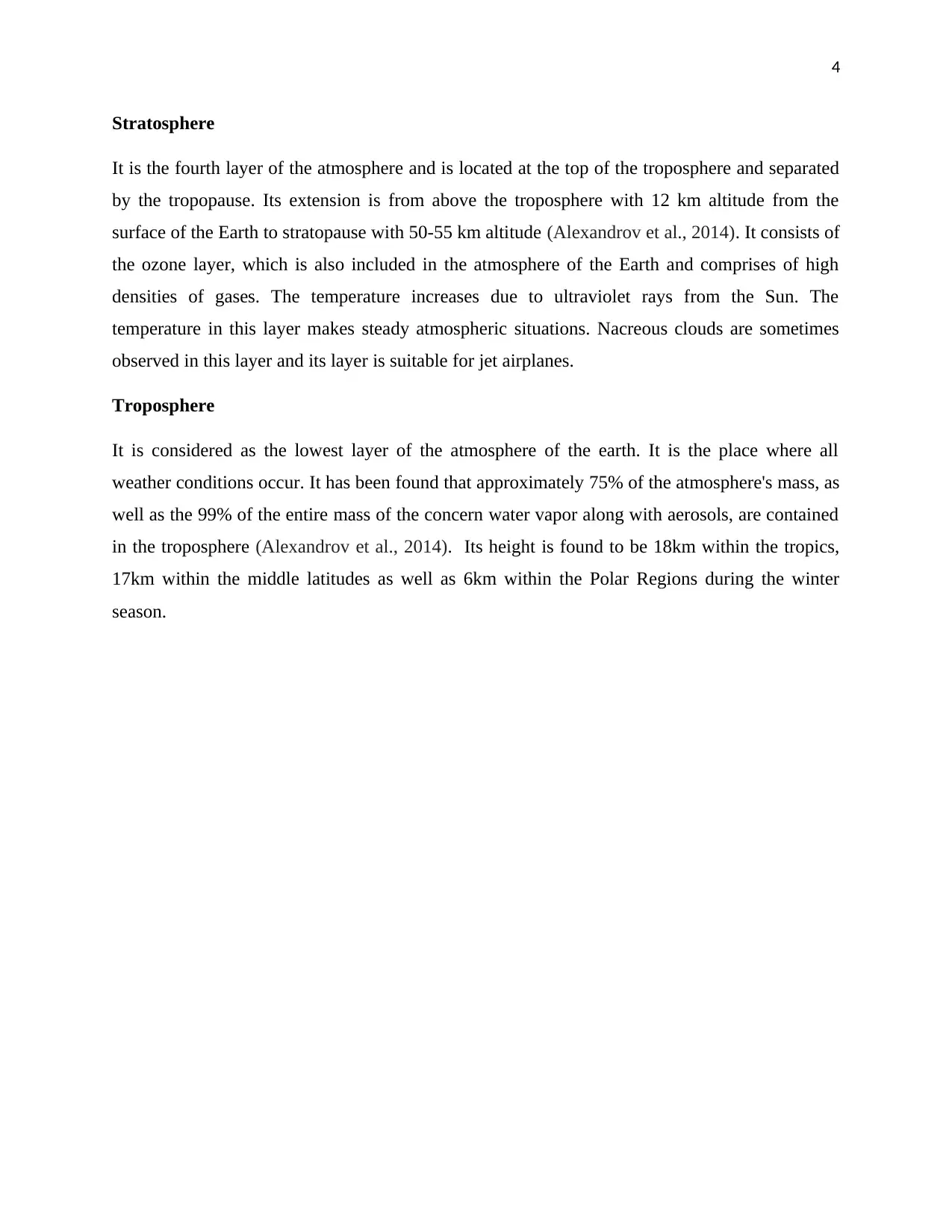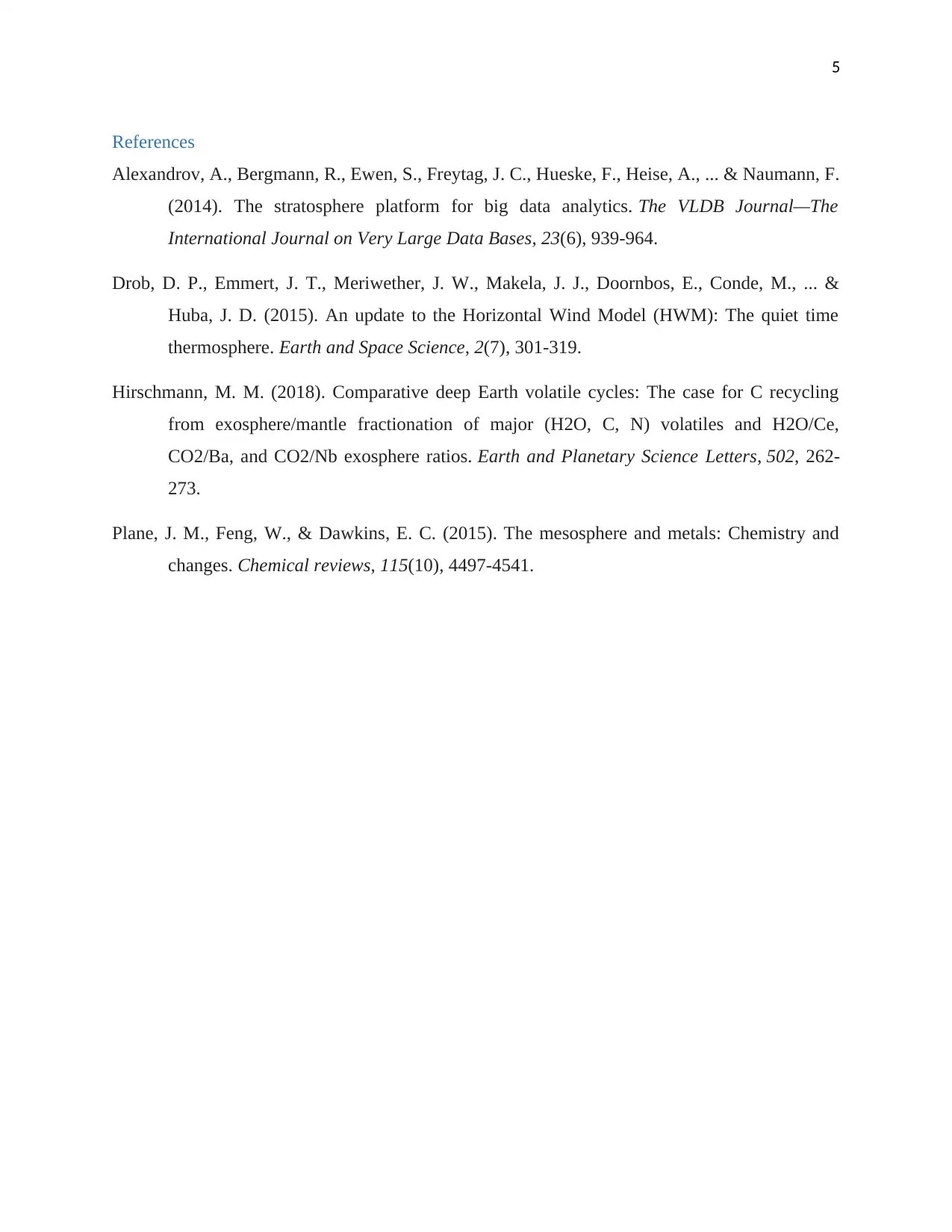Detailed Analysis of Atmospheric Layers in Aviation Management
VerifiedAdded on 2023/06/03
|6
|847
|286
Report
AI Summary
This report delves into the five layers of the Earth's atmosphere, focusing on their relevance to aviation. It begins with the exosphere, the outermost layer, and then progresses through the thermosphere, mesosphere, stratosphere, and troposphere, detailing the characteristics of each layer, including temperature variations, composition, and the presence of phenomena like auroras and clouds. The report highlights the importance of these layers for aviation, mentioning the altitudes at which different atmospheric layers exist, and how they impact aircraft operations. It also references key scientific studies that have contributed to the understanding of atmospheric layers, making this report a comprehensive guide for students of aviation management. This assignment is designed to give students an understanding of the atmosphere and how it relates to aviation.
1 out of 6







![[object Object]](/_next/static/media/star-bottom.7253800d.svg)